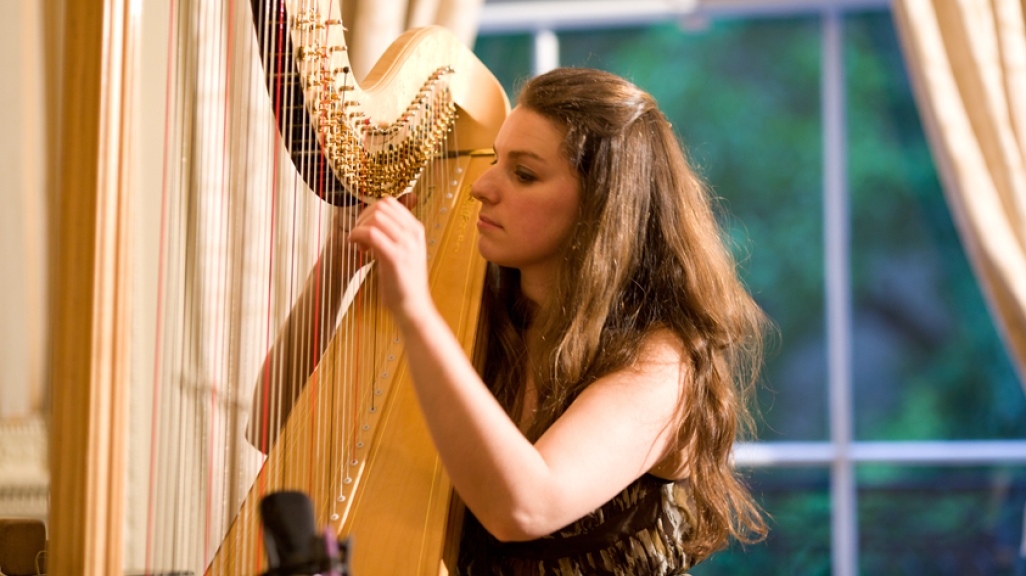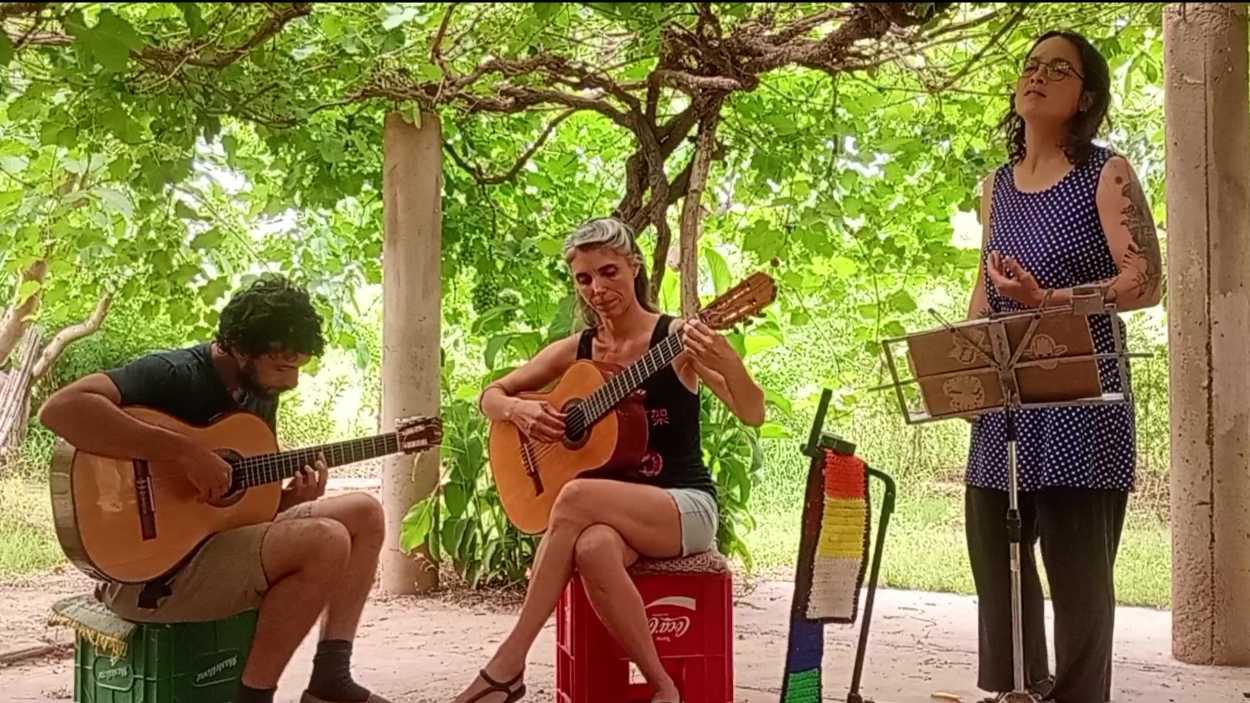Harpist Bridget Kibbey Performs New Works at Americas Society
Harpist Bridget Kibbey Performs New Works at Americas Society
By
Kris Simmons
On May 9, Music of the Americas featured a variety of music for harp composed by an international cast.
On May 9, harpist Bridget Kibbey returned to Americas Society for a solo recital of music by composers from throughout the Western Hemisphere. The program included new pieces written for Kibbey by Ricardo Romaneiro, Paquito D’Rivera, and Kati Agócs; an unpublished piece by Gerardo Gandini; a piece by Canadian composer R. Murray Schafer; and a work inspired by Venezuelan folk music by American composer David Bruce.
The first piece featured a new work composed for Kibbey by jazz legend Paquito D’Rivera entitled Habanera. Dedicated to Maurice Ravel, Habanera was originally part of a five-movement work, Aires Tropicales, for woodwind quintet. The second D’Rivera piece featured on the program, Bandoneon, was inspired by the expressive accordion-like instrument regarded by many as the soul of the Argentine tango and was initially scored as the second movement of D’Rivera’s Cape Cod Concerto for clarinet, piano, and orchestra. Canadian composer Kati Agócs’s cycle for solo harp entitled Northern Lights was also featured, incorporating folk songs from three regions of Canada. Within the three central movements, Agócs uses the original folk melodies but adjusts each melody with her own harmonic inflections and juxtaposes them with new motives.
Written for Kibbey’s Weill Hall recital debut in 2009, David Bruce’s Caja de Música followed Northern Lights and utilizes the harp as a raw, vibrant, and rhythmic instrument echoing the joropo music of Venezuela that inspired the composer. Meaning “music box” in Spanish, Bruce defines this piece as involving “strong hints of joropo throughout, but there is also something of that music box naivety here too.”
Next on the program came R. Murray Schafer’s The Crown of Ariadne, originally written for Canadian harpist Judy Loman who premiered the piece in March 1979. Part of Schafer’s theatrical work Patria 5— which retells the myth of Theseus, Ariadne, and the Minotaur—the composer uses the harp to represent Ariadne and the harpist plays small percussion instruments such as ankle bells, crotales, cymbals, and wood blocks. The harpist must also sing into the harp through a tube, slide the tuning key up and down the strings, and produce percussive techniques.
Ricardo Romaneiro’s Glitch Box, the final work on the program, was composed for amplified harp and live electronics. "Glitch" is a term used to describe a genre of electronic music that emerged in the late 1990s. In this piece, the acoustic harp is processed through computer software as well as audio hardware to "glitch" the live sound, creating a tapestry of cascading rhythmic counterpoint. The most common "glitch" technique is similar to the sound of a skipping CD, except here the effect is notated into rhythmic patterns that correspond to certain musical material and forms, transforming the sounds associated with digital reading errors into something intentional. In Glitch Box, the composer creates a live electronic element in which dozens of musical cells, pre-composed musical modules that can be activated spontaneously, are combined with the harp and manipulated at will. These elements are “played” by the laptop performer throughout the piece in an improvised manner. The combined results mix the dry amplified signal from the harp with processed and pre-generated sounds to create the impression that the acoustic harp and electronics sound as a single instrument.
Kibbey continues performances throughout the United States and Canada in the coming year. Visit www.bridgetkibbey.com for more information.









